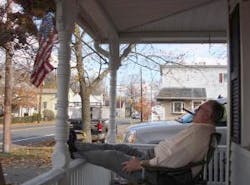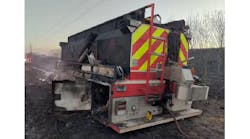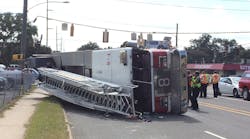Many times have my columns here touched the topic of problem-solving. However, these discussions normally covered the topic at the organizational level. However this time around I have crafted this column in a different way. I am going to discuss problem solving at the personal, company or unit level, in situations where you have neither the luxury of time, distance, nor distance to shield you from the impact of your problem-solving decisions.
In the work-a-day world of your fire department, you will normally be interacting continually with the small group of folks with whom you are assigned on a permanent basis. In the career world small unit leaders are normally dealing with the same folks on their shift over given period of time.
You will become familiar with these folks and this familiarity can assist you in becoming accustomed to with each person and assessing their individual role in the success (or failure) of your unit. This day-to-day knowledge can assist you in monitoring people so that you may be able to head off problems before them grow to a disruptive level.
Volunteer fire departments present a somewhat different challenge. Given the nature of your response patterns, you never really know who will end up riding officer's seat. In addition, you can never really forecast who will be riding in the right front seat (or officer's position) on your department's firefighting units. This means that you are going to have to learn more about the people in your organization, so that you can assess the people with whom you end up serving.
This is not so great a problem in fire departments which operate from a single station. And if you think about it, even in those situations where there are two or more stations, the problems you face will be problems created by members of the units which are responding from your station. It is not common for members from one station to respond and ride in the officer's position for units assigned to another station. While this can happen, the chances of that occurring are not all that great.
Let me suggest to you that the need exists for you to be continually scanning and monitoring the environment in your station or among the members of your group. You need to be able to assess the attitudes and motivation of your folks on a continuing basis. Let me also suggest that your environmental scan take the occasional look out at the world around you, for nothing you and your folks do occurs in a vacuum, devoid of the influence of the outside world. If you are diligent in performing this task I will suggest that you will be better able to see the storm clouds of trouble as they begin to develop out there on the horizon.
Even at those times when you have a hunch that something may be wrong it could take you some time to put the pieces of the puzzle together. However, once you make your decision that something is amiss, it is then time to begin the process of solving the problem you have identified. Let me share an important piece of information with you here. I suggest that should you ignore it you do so at your own peril. Regardless of the number of people living within your fire station world, the process of problem-solving is the same as it is for situations on the major level. Whether there are two people or twelve people, you must still use the same process.
Your first step is to actually define the actual problem. Be sure that what you are looking at is the actual problem and not a symptom of the problem. Be sure that you are treating the pinched nerve that is causing the headache and not just taking aspirin for the symptoms.
Perhaps the attitude among your team members suddenly takes a turn of the cold shoulder variety. Let us say, for example, that your normally tight-knit group suddenly finds itself shunning one member of the team, excluding them from the coffee table conversations and generally doing what they can to stay away from them. This is not out of the question. I have seen it happen.
Then there is the half-hearted approach to company drills, inspection duties, and maybe even response to fire or EMS calls. As the small-group leader, it is up to you to pitch in and find out what's going on. Let me assure you of one critical fact of life. If you choose to ignore a problem it will not go away. I can almost promise you that it will get worse.
In any situation such as this you must to begin collecting information which can help you in getting to the root cause of the problem. Until you do this, you will not be able to develop any sort of solution to the problem at hand. This is truly the first part of preparing your case for solving problems of any kind. You have to get the facts and identify the problem.
Something which seems to happen more often than I would like to see involves people trying to fit solutions to the symptoms of the problem rather than addressing the problem. Let me offer an example of what I mean. Suppose that your unit has had a number of occasions where it took a little too long to get out. Or how about if you continually face situations where you leave the station without having confirmed the address to which you are responding.
In this case the symptoms involve being beaten into your assignments by other units which are more distant. Or worse yet, you call on location at a place which is not the true location, but it is where you thought you were going. Is this an internal problem or an external problem? Regardless of which of these it is, when you are riding the right-front seat my friend, it is your problem.
During your initial investigation you must speak with every member of your company. Let me suggest that you first speak to each person privately and get their take on the problem which you have identified. Ask simple questions in a non-threatening manner, take notes, and assemble your data.
You should ask questions about whether each person heard the dispatch message and their perception of what they believe they heard. Then ask them questions about their familiarity with your response district. It might be that people are not paying enough attention to the dispatch message or that they are not familiar with the street network in your area. Either can lead to the response problems which you identified.
Are there problems in perceiving the dispatch message? Your investigation must find an answer to that question. Are they taking too much time do don their protective equipment, board the apparatus and then leave the station? Is the problem the lateness of your unit in arriving on location or is it possible that the people on your team have not fully learned (or been required by you to learn) the streets in their district? Remember, if you did not teach them or monitor their learning process then it is your fault. It could be that you investigation lays the blame at your feet. If so, stand-up, take the blame for the situation and then work to correct the problem.
I can think of one fire department which had this problem, but on a somewhat larger scale. The problem started on the small scale when it was noted that there was an uneven response to department calls among the volunteer personnel. Many times the person riding the right-front seat had to roll out the front door with less than a full compliment of troops. This led to problems for the right-front-seat leader when they were called upon to perform more tasks than they had to crew to deliver. This led to some really challenging operational alterations, but there troops in the right-front seat got the job done.
As the investigation into the facts of the situation went forward, the evidence began to mount up that the messages being sent through the paging system were coming across garbled. In some cases people were not alerted because their pagers were not activated by the dispatch signal. In other cases, people thought they were hearing one address when in fact it was another. Or in the more extreme cases, the message was completely garbled and unreadable. Responses were being delayed and members of the department, including the chief, were not being alerted to the department's responses.
Unfortunately, in this case the problem rose to the level of inter-agency finger-pointing between the fire department and the police dispatch center. The dispute became protracted and could have become really ugly. However, cooler heads prevailed on both sides and a joint committee form to conduct a total system review. The committee called the company who was servicing the communications system onto the carpet and demanded a full accounting. After the pitiful efforts by the company which provided the support to the communications proved unable to come up with a solution, it was decided that a house-cleaning was in order.
In order to get the right solution to a problem, it is critical for you to be able to generate alternative options to use in solving the problem. In this case, it was quickly determined that a new firm was needed and actions were taken to solicit proposals from interested firms. In the meantime, the original communication's firm lost their contract and a after a period of bidding and bid acceptance, a new firm was retained.
Guess what? As part of their initial investigation of the system, the new firm quickly came up with the cause of the problem and within a week or so, had made the necessary repairs to the system. The fact-finding mission identified a number of problems which led to the hunt for a new firm. The new firm then solved the problem by correcting the problem which the original firm could not find.
As you work to solve problems, remember that you must generate alternative options for possible solutions. Never jump at the first thing which pops into your mind as you develop the alternatives. It is then critical for you to evaluate the alternative options. Many people get hung up at this phase. They are so busy pondering all of the possibilities that they never make a decision.
To this I say quite simply, pick the one which seems to be the best fit for the situation at hand. You also need to lay out the criteria which will determine what a solution to the problem will look like. Then get off the dime my friends and select an alternative which fits the situation. Then Do it.
The final stage of the process is really quite simple. Check your feedback to see how the decision is working. If that which was the problem seems to have gone away, pat yourself on the back, thank the members of your crew for their help and then move on. However, if the situation does not improve then use one of the other alternative solutions which I suggested that you develop.
The object here is to evaluate the success of your choice. If it is getting the job done for you, then your decision is correct. If it does not solve your problem, choose another alternative and see how things go. If none of the alternatives work, you may have to start the process over from the beginning.
I can remember a fire back during my times as an incident commander inNewarkwhere the problems which my guys and I faced became so overwhelming that we pulled everyone out of the block where the factory was burning. It was so unsafe to continue what we were doing that we regrouped our forces two blocks away and went back to a totally different method of attacking the fire. Eventually, we did manage to extinguish it. And more important, none of the more than 80 fire department people conducting the firefighting operation were injured. That spells success to my way of thinking.
Let me suggest reasons for bad decisions. Regardless of our intentions, bad decisions occur from time to time. Why is this? Many times people charged with making decisions do not trust the people who work with them. It also could be that they have not trained their subordinates to make decisions or ever allowed them to develop as leaders. In any case, they ignore what people have to say and make all decisions themselves.
They ignore data that does not confirm their way of thinking. Bad decisions can result from this myopic view of life. Rather than soliciting advice and opinions, these people rely on their own preferences. They presume that they have seen and experienced everything. Quite simply, they say the heck with everyone else. I know what is best and the rest of you do not. This type of thinking can lead to serious consequences.
Sometimes people make decisions based strictly upon tradition. These are the people who live by the motto, “We've always done it that way.” These are the people who will always seek to use a 1 3/4-inch hoseline for every type of fire, from a trash can to warehouse. This is not a good way for people riding the right-front seat to operate.
Worst of all are the people have not learned from the bad decisions they have made in the past. It is their feeling that if they keep trying the same decision over and over, it will eventually be the right one. People can be killed in this fashion. Some people truly never do learn from their mistakes.
Let me sum up the method for you.
- Define the problem.
- Collect information.
- Generate alternative options.
- Evaluate the alternatives.
- Pick one.
- DO IT!!!
- Check your feedback to see how the solution to your problem is working.
Absorb the meaning of what it takes to solve a problem. Then let me suggest that you practice solving problems. Let me cheer you up a bit. Let me assure you that it has been my experience that you will get better with practice. But if you don’t try, then you will never succeed and at some point you may kill or maim someone. I sure as heck would not want that on my conscience. So get with it and start looking to solve the next problem you encounter. Don't leave it to the other person. They might not be as smart as you.






